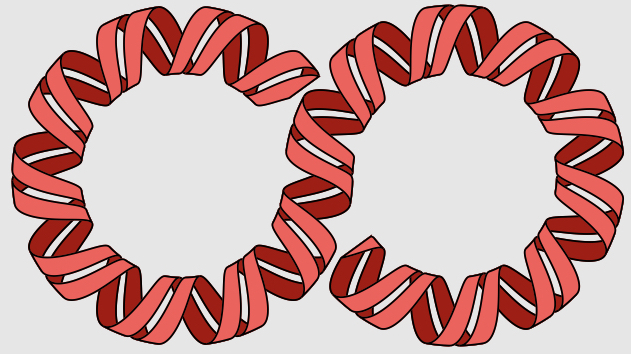Publications
Submitted
2025
2023
2022
In eukaryotes, members of large transcription factor families often exhibit similar DNA binding properties in vitro, yet initiate paralog-specific gene regulatory networks in vivo. The serially homologous first (T1) and third (T3) thoracic legs of Drosophila, which result from alternative gene regulatory networks specified by the Hox proteins Scr and Ubx, respectively, offer a unique opportunity to address this paradox in vivo. Genome-wide analyses using epitope-tagged alleles of both Hox loci in the T1 and T3 leg imaginal discs, which are the precursors to the adult appendages and ventral body regions, show that ∼8% of Hox binding is paralog-specific. Binding specificity is mediated by interactions with distinct cofactors in different domains: the known Hox cofactor Exd acts in the proximal domain and is necessary for Scr to bind many of its paralog-specific targets, while in the distal leg domain, we identified the homeodomain protein Distal-less (Dll) as a novel Hox cofactor that enhances Scr binding to a different subset of genomic loci. Reporter genes confirm the in vivo roles of Scr+Dll and suggest that ∼1/3 of paralog-specific Hox binding in enhancers is functional. Together, these findings provide a genome-wide view of how Hox paralogs, and perhaps paralogs of other transcription factor families, orchestrate alternative downstream gene networks and suggest the importance of multiple, context-specific cofactors.
Protein-ligand interactions are increasingly profiled at high throughput using affinity selection and massively parallel sequencing. However, these assays do not provide the biophysical parameters that most rigorously quantify molecular interactions. Here we describe a flexible machine learning method, called ProBound, that accurately defines sequence recognition in terms of equilibrium binding constants or kinetic rates. This is achieved using a multi-layered maximum-likelihood framework that models both the molecular interactions and the data generation process. We show that ProBound quantifies transcription factor (TF) behavior with models that predict binding affinity over a range exceeding that of previous resources; captures the impact of DNA modifications and conformational flexibility of multi-TF complexes; and infers specificity directly from in vivo data such as ChIP-seq without peak calling. When coupled with an assay called KD-seq, it determines the absolute affinity of protein-ligand interactions. We also apply ProBound to profile the kinetics of kinase-substrate interactions. ProBound opens new avenues for decoding biological networks and rationally engineering protein-ligand interactions.
2021
Mechanical deformations of DNA such as bending are ubiquitous and have been implicated in diverse cellular functions1. However, the lack of high-throughput tools to measure the mechanical properties of DNA has limited our understanding of how DNA mechanics influence chromatin transactions across the genome. Here we develop 'loop-seq'-a high-throughput assay to measure the propensity for DNA looping-and determine the intrinsic cyclizabilities of 270,806 50-base-pair DNA fragments that span Saccharomyces cerevisiae chromosome V, other genomic regions, and random sequences. We found sequence-encoded regions of unusually low bendability within nucleosome-depleted regions upstream of transcription start sites (TSSs). Low bendability of linker DNA inhibits nucleosome sliding into the linker by the chromatin remodeller INO80, which explains how INO80 can define nucleosome-depleted regions in the absence of other factors2. Chromosome-wide, nucleosomes were characterized by high DNA bendability near dyads and low bendability near linkers. This contrast increases for deeper gene-body nucleosomes but disappears after random substitution of synonymous codons, which suggests that the evolution of codon choice has been influenced by DNA mechanics around gene-body nucleosomes. Furthermore, we show that local DNA mechanics affect transcription through TSS-proximal nucleosomes. Overall, this genome-scale map of DNA mechanics indicates a 'mechanical code' with broad functional implications.
Though AsCas12a fills a crucial gap in the current genome editing toolbox, it exhibits relatively poor editing efficiency, restricting its overall utility. Here we isolate an engineered variant, “AsCas12a Ultra”, that increased editing efficiency to nearly 100% at all sites examined in HSPCs, iPSCs, T cells, and NK cells. We show that AsCas12a Ultra maintains high on-target specificity thereby mitigating the risk for off-target editing and making it ideal for complex therapeutic genome editing applications. We achieved simultaneous targeting of three clinically relevant genes in T cells at >90% efficiency and demonstrated transgene knock-in efficiencies of up to 60%. We demonstrate site-specific knock-in of a CAR in NK cells, which afforded enhanced anti-tumor NK cell recognition, potentially enabling the next generation of allogeneic cell-based therapies in oncology. AsCas12a Ultra is an advanced CRISPR nuclease with significant advantages in basic research and in the production of gene edited cell medicines.
2020
CRISPR RNA-guided endonucleases (RGEs) cut or direct activities to specific genomic loci, yet each has off-target activities that are often unpredictable. We developed a pair of simple in vitro assays to systematically measure the DNA-binding specificity (Spec-seq), catalytic activity specificity (SEAM-seq) and cleavage efficiency of RGEs. By separately quantifying binding and cleavage specificity, Spec/SEAM-seq provides detailed mechanistic insight into off-target activity. Feature-based models generated from Spec/SEAM-seq data for SpCas9 were consistent with previous reports of its in vitro and in vivo specificity, validating the approach. Spec/SEAM-seq is also useful for profiling less-well characterized RGEs. Application to an engineered SpCas9, HiFi-SpCas9, indicated that its enhanced target discrimination can be attributed to cleavage rather than binding specificity. The ortholog ScCas9, on the other hand, derives specificity from binding to an extended PAM. The decreased off-target activity of AsCas12a (Cpf1) appears to be primarily driven by DNA-binding specificity. Finally, we performed the first characterization of CasX specificity, revealing an all-or-nothing mechanism where mismatches can be bound, but not cleaved. Together, these applications establish Spec/SEAM-seq as an accessible method to rapidly and reliably evaluate the specificity of RGEs, Cas::gRNA pairs, and gain insight into the mechanism and thermodynamics of target discrimination.

